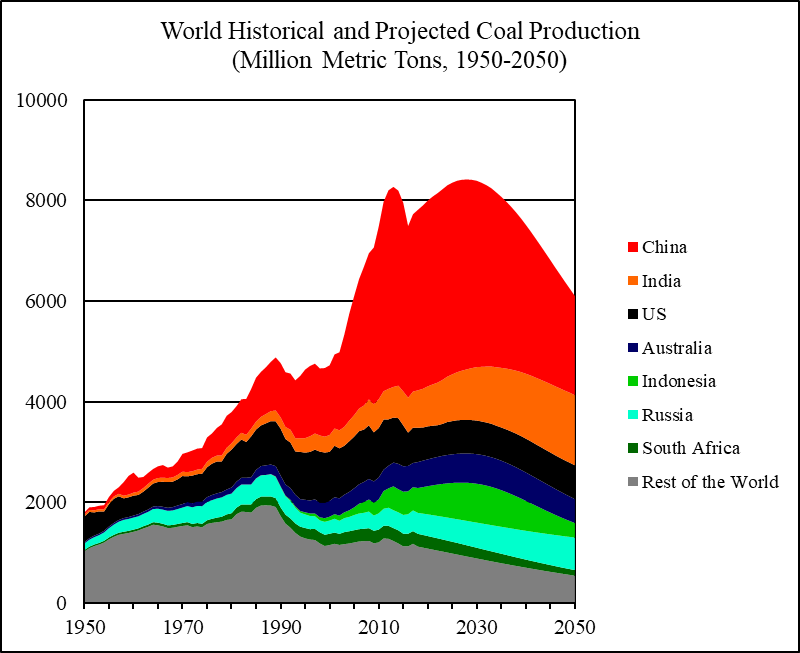World Coal 2018-2050: World Energy Annual Report (Part 4)
This is Part 4 of the World Energy Annual Report in 2018. This part of the Annual Report provides updated analysis of world coal production and consumption, evaluates the future prospect of world coal supply and considers the implications of peak coal production for global economic growth.
This report uses Hubbert linearization to evaluate a region’s ultimately recoverable coal resources where a Hubbert linear trend can be meaningfully established, that is, where a clear downward trend of the annual production to cumulative production ratios can be identified and has been established for at least several years. Otherwise, this report uses alternative sources to establish a region’s ultimately recoverable coal resources, such as official reserves, official projections, or estimates made by energy research institutions.

Figure 14 World Historical and Projected Coal Production, 1950-2050
Figures are placed at the end of each section.
Coal Consumption by Major Economies, 1990-2017
According to the BP Statistical Review of World Energy, world coal consumption was 3,732 million tons of oil equivalent in 2017. Between 2007 and 2017, world coal consumption grew at an average annual rate of 0.8 percent.
Figure 1 compares the historical world economic growth rates and the coal consumption growth rates from 1991 to 2017. The coal consumption growth rate has an intercept of -0.031 at zero economic growth rate and a slope of 1.496. That is, coal consumption has an “autonomous” tendency to fall by 3.1 percent a year when economic growth rate is zero. However, an increase (or decrease) in economic growth rate by one percentage point is associated with an increase (or decrease) in coal consumption by about 1.5 percent. R-square for the linear trend is 0.45. In 2017, world coal consumption grew by 0.7 percent, a rate that is 1.9 percentage points below what is implied by the historical trend.
…click on the above link to read the rest of the article…